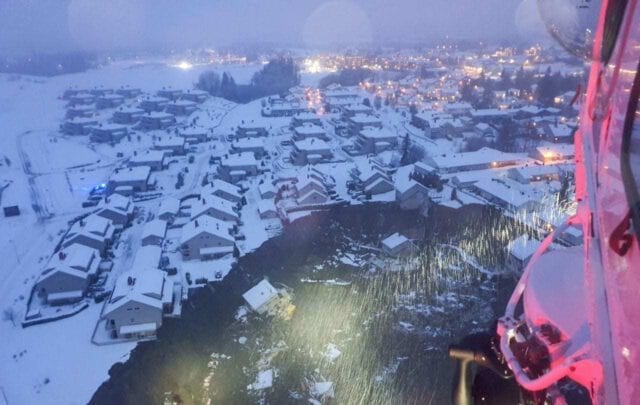- The government is closely following the rescue operation in the landslide in Gjerdrum. Our thoughts go first and foremost to those who have been affected by this catastrophe, to their family and friends. We especially think about those who have lost loved ones or still miss their loved ones, says Oil and Energy Minister Tina Bru.
Since the landslide last night, the Norwegian Water Resources and Energy Directorate (NVE) has assisted the police and rescue management in assessing the dangers of the landslide, as well as giving advice on how to carry out a rescue operation in the safest possible way and in which areas to evacuate.
Read our article on event development. The article is constantly updated.
- I would like to thank everyone who helps in the rescue operation. Rescue personnel, municipalities, police, NVE and others are making considerable efforts, continues Bru.
The Gjerdrum landslide is one of the largest recent clay landslides. The cause is not exactly known yet. NVE will also support the municipality in the future.
- It's too early to say anything about the cause of the landslide. Further assessment of the causes of the incident must be carried out after the acute phase we are in, says Tina Bru.
Disaster background
The Gjerdrum rapid clay deposit was known to both the municipality and the NVE. The municipality and NVE have been contacted about this in different contexts before. NVE contacted the municipalities of Ullensaker, Nannestad and Gjerdrum no later than fall 2020 for future research on several clay fast zones in the municipalities.
Quick clay areas (Kvikkleireområder)
Fast clay can be found where there is so-called sea clay (deposited in the sea 10 years ago). The uplift of the land after the Ice Age led to sea clay being thrown ashore. Fresh groundwater has been flowing through this clay for thousands of years, flushing out the salt water. Then, layers or pockets of fast clay are formed in the sea clay. When fast clay is overloaded, it collapses and becomes almost liquid. It is this property that makes rapid clay landslides often so extensive.
Many of the most populated areas in Norway are in areas where sea clay is present and where there may be sea clay deposits.
Living in such an area is not considered dangerous when it is not overloaded. Consequently, it is possible to build in such clay areas, but the necessary research must be carried out in advance.
Fast clay areas with potential avalanche hazard are mapped at the regional level. When developing in such an area or to assess the need to protect existing buildings, such an area is carefully examined to assess the stability of the site.




